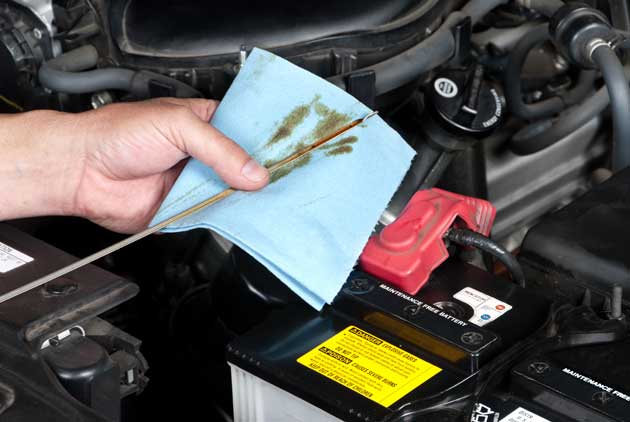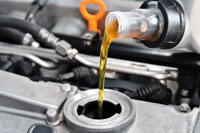Changing the oil – you need to know that: Statistically speaking, every German drives 14,000 kilometers a year in their car. During these journeys, the engine has to deliver maximum performance, which the engine oil helps it to achieve. Therefore, you should pay special attention to this. The oil change and the oil filter change are therefore important measures to keep your car functional for a long time.
Why is the oil change so important?
The engine oil performs important tasks in the vehicle, ranging from lubricating and sealing to cooling and corrosion protection. In particular, the moving parts of the engine are always lubricated with oil when driving so that they do not rub against each other and damage each other. If the protective oil film is missing, the piston and cylinder surface would seize up within a very short time, which would be tantamount to a total loss of the engine.

In addition, the oil film acts as a fine seal between the scraper ring of the piston and the cylinder surface. In the case of thermally stressed parts in the engine compartment, the oil film also ensures cooling and dirt particles, such as combustion residues or the finest metallic abrasion, are removed by the engine oil on its way through the engine. As a result, these residues cannot be deposited in the engine compartment and cause damage. Instead, they are simply removed with the oil change.
The right motor oil

Choosing the right engine oil is also important when changing the oil. You can choose between mineral and synthetic oils. Both are made from petroleum, the difference being that additives are added to the mineral oil afterwards to improve its properties. In the case of synthetic oil, on the other hand, chemical treatments are already carried out during production. The synthetic oil can also be used as a multigrade oil, so you can use it for different temperature ranges. This means that you can use the engine oil both in summer and in winter.
With the synthetic oils you also have the choice between different special oils. These include low-ash oils, which are suitable for diesel engines and burn almost ash-free. You will also come across low-viscosity oils again and again. They promise to help save fuel. However, synthetic oils are somewhat more expensive due to the more complex production process. In return, they promise that the lubricating films will not tear even under maximum load and that the cooling effects should even be better. In addition, the oil change interval can be increased.
However, you should not only consider the advantages of the individual oils when changing the oil, but also whether the respective oils have been approved by the manufacturer of your vehicle. The best thing to do is to look it up in your car’s owner’s manual. The type-specific designations are recorded there, as well as the ACEA and API specifications, which you can find on every packaging.
How often do you need an oil change?
In addition to choosing the right oil, you should also intervals know for the oil change. The correct interval is usually specified in the vehicle’s operating instructions. However, it does not take into account your individual driving style, which can still change the intervals. As a rule, you can assume that after 15,000 kilometers or at least do a complete oil change once a year. If you often drive short distances and like to accelerate from a standing start, you should choose shorter intervals for the oil change, as this driving style puts more strain on your engine.
Some vehicles also provide a dynamic change interval. In this case, you must use the prescribed long-life oil. In this case, the on-board computer uses your individual driving data, such as oil level, speed, rpm, consumption and brake wear, to calculate when you should change the oil. In these cases, you can travel up to 30,000 kilometers with the petrol engine before the oil change is due. With the diesel engine, it can even be up to 50,000 kilometers. However, you must ensure that only the prescribed long-life oil is used, not only for a complete oil change, but also for topping up.
Complete oil change video
Oil change: The filter must also be changed
Remember that every time you change the oil, you also change the oil filter. It is responsible for filtering dirt particles and metal debris out of the oil. Over time, the oil filter becomes clogged with these residues. However, you should not change the oil filter without also changing the oil. Over time, it ages and the additives used lose their effectiveness. If your car has an oil cooler, you should also change the oil in it. You can bleed the oil cooler at the same time.
